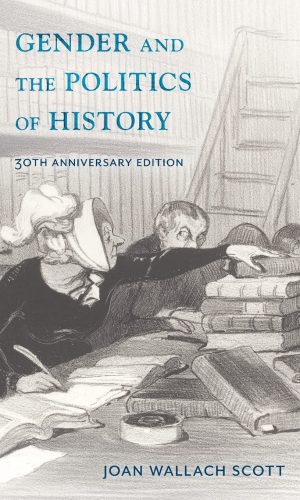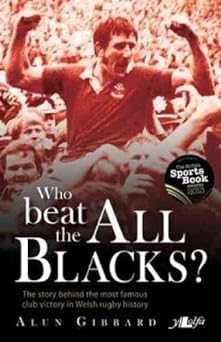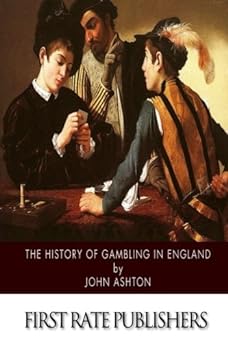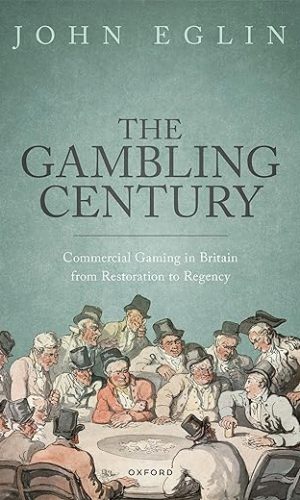Europe
-
Soldiers and Civilians, Transport and Provisions: Early Modern Military Logistics and Supply Systems During the British Civil Wars, 1638-1653: 108 (Century of the Soldier)
Until now historical works have neglected to fully consider the events of the British Civil Wars with respect to the logistics and supply systems. As such, this book evaluates and challenges these narratives of the wars by tackling historical debates through the lens of these logistics and supply systems at an operational level. How the military logistics and supply systems of the period functioned is revealed, including what methods of supply were used, what decisions and events these systems impacted, and how these related to strategic and tactical outcomes of the wars.The book investigates the facets of land, coastal, and riverine transportation, the supply of manpower to the armies, and the supply of food, clothing, and shelter to multiple forces across various conflicts throughout the British Civil Wars. With an application of a broad range of both civilian and military sources, this research employs archival and manuscript materials from national and local archives across the British Isles, contemporary tracts, letters, books, and pamphlets, as well as secondary literature from a variety of historical fields–from military history, economic and social studies, as well as reconstructive archaeology. As a result, the study outlines regional disparity in military logistics systems due to reliance on pre-existing civilian structures and methods–which had not been developed with a military purpose in mind and resulted in substantial logistical and supply differences that consequently, and heavily, favored one faction over another.
Many questions that have bedevilled previous historiography–and some that remain contentious even today–are likewise explored through this new perspective. This includes, but is not limited to, countering the simple narrative that Royalist armies were terribly supplied in comparison to Parliament, placing the Royalists’ Gloucester campaign in its correct strategic context, highlighting Catholic recruitment to Cromwell’s forces in Ireland, and providing a reasonable and informed explanation for Prince Rupert’s decision to fight at Marston Moor–all through the lens of logistics and supply. It emphasizes the absolute necessity of interactions between civil and military authority across multiple levels to supply early modern forces, providing a more nuanced history of civilian and military interactions than the popular view of soldiers imposing their will on a suffering population.
The book’s analysis of logistics and supply during the British Civil Wars, a focus not undertaken in such detail so far for the period, will provide a compelling read for those with interests in the operational realities of warfare during the seventeenth century more broadly, and the British Civil Wars in particular.
Read more
£25.80£33.30 -
Buses in South and West Yorkshire
The Metropolitan counties of South and West Yorkshire have some of the most intensive bus operations outside Birmingham and London. The former metropolitan counties include considerable amounts of rural terrain alongside densely populated urban areas. Author Peter Tucker takes us on a lively photographic tour of the region’s transport scene. The journey takes us everywhere from genteel towns like Horsforth, Ilkley and Wetherby down to areas of heavy industry such as the Don Valley in Sheffield. In between we visit places as contrasting as Barnsley, Dewsbury, Pontefract and Rotherham and Swinton. Yorkshire’s cosmopolitan cities are not forgotten either, as we explore Bradford, Leeds, Sheffield and Wakefield. Featuring operators such as Arriva, First and Stagecoach, this publication also looks back to the 1990s with photographs depicting buses of the now defunct Yorkshire Rider, Yorkshire Traction and West Riding.Read more
£11.70£15.20Buses in South and West Yorkshire
£11.70£15.20 -
Slavery in East Asia (Elements in the Global Middle Ages)
In premodern China, Korea, Japan, and Vietnam, just as in the far less culturally cohesive countries composing the West of the Middle Ages, enslavement was an assumed condition of servitude warranting little examination, as the power and profits it afforded to the slaver made it a convention pursued unreflectively. Slavery in medieval East Asia shared with the West the commonplace assumption that nearly all humans were potential chattel, that once they had become owned beings, they could then be either sold or inherited. Yet, despite being representative of perhaps the most universalizable human practice of that age, slavery in medieval East Asia was also endowed with its own distinctive traits and traditions. Our awareness of these features of distinction contributes immeasurably to a more nuanced understanding of slavery as the ubiquitous and openly practiced institution that it once was and the now illicit and surreptitious one that it intractably remains.Read more
£3.00£16.20 -
Gender and the Politics of History (Gender and Culture Series)
This landmark work from a renowned feminist historian is a foundational demonstration of the uses of gender as a conceptual tool for cultural and historical analysis. Joan Wallach Scott offers a trenchant critique of the compartmentalization of women’s history, arguing that political and social categories are always fundamentally shaped by gender and that questions of gender are essential to considerations of difference in history. Exploring topics ranging from language and class to the politics of work and family, Gender and the Politics of History is a vital contribution to feminist history and historical methodology that also speaks more broadly to the ongoing redefinition of gender in our political and cultural vocabularies.This anniversary edition of a classic text in feminist theory and history shows the evergreen relevance of Scott’s work to the humanities and social sciences. In a new preface, Scott reflects on the book’s legacy and implications for contemporary politics as well as what she has reconsidered as a result of her engagement with psychoanalytic theory. The book also includes a previously unpublished essay, “The Conundrum of Equality,” which takes up the question of affirmative action.
Read more
£22.40£23.80 -
Culture, Politics and Sport: Britain in the 20th Century: Bitesize Britain (Bitesize Britain: Britain in the 20th Century)
Explore the captivating journey of Britain through the 20th century with “Culture, Politics and Sport: Britain in the 20th Century”. This compelling book takes readers on a unique voyage through time, offering bite-sized chunks of social history that delve into the cultural, political, and sporting landscapes of each decade. From the dawn of the new century to the eve of the new millennium, this bite-sized guide provides an insightful and engaging account of Britain’s transformation over 100 years. Each decade is explored in a dedicated chapter, allowing readers to gain an understanding of the key events, societal shifts, and influential figures that shaped Britain. From the Roaring Twenties to the swinging 1960s and from the turbulent 1980s to the dawn of the digital age, the book offers a panoramic view of the nation’s social fabric.
The book seamlessly weaves together the intertwined threads of culture, politics and sport, revealing their impact on the British society throughout the 20th century. Discover how the arts, music, and literature evolved, reflecting the changing values and aspirations of the people. Uncover the political upheavals that shaped the nation, from the suffrage movement and the rise and fall of political ideologies to the transformative post-war welfare state. And dive into the world of British sport, where heroes were made, records were broken, and moments of triumph and heartbreak captured the nation’s spirit.
Through a combination of engaging storytelling and concise historical analysis, “Culture, Politics and Sport: Britain in the 20th Century” brings history to life. Whether you’re a history enthusiast or simply curious about the past, this book provides a fascinating exploration of the transformative events and social dynamics that have shaped modern Britain.
Read more
£14.20 -
Now That’s What I Call a History of the 1980s: Pop Culture and Politics in the Decade That Shaped Modern Britain
Now that’s what I call a history of the 1980s tells the story of eighties Britain through its popular culture. Charting era-defining moments from Lady Diana’s legs and the miners’ strike to Glastonbury’s Pyramid Stage and Adam and the Ants, Lucy Robinson weaves together an alternative history to the one we think we know. This is not a history of big geopolitical disasters, or a nostalgic romp through discos, shoulder pads and yuppie culture. Instead, the book explores a mashing together of different genres and fan bases in order to make sense of our recent past and give new insights into the decade that defined both globalisation and excess. Packed with archival and cultural research but written with verve and spark, the book offers as much to general readers as to scholars of this period, presenting a distinctive and definitive contemporary history of 1980s Britain, from pop to politics, to cold war cultures, censorship and sexuality.Read more
£12.30£14.20 -
Who Beat the All Blacks?: The story behind the most famous club victory in Welsh rugby history
A new edition to commemorate the 50th anniversary of one of the greatest rugby moments ever. Against all expectations, on 31 October 1972 Carwyn James Llanelli beat New Zealand 9-3. The day’s events are recalled by those who were there. First edition shortlisted for 2013 British Sports Book Awards.Read more
£9.50 -
Rugby Town: The Sporting History of D4
Dublin 4, probably best-known in sporting terms as the spiritual home of Leinster Rugby, has one of the highest densities of diverse sports clubs in all of Ireland. In this new work from Kurt Kullmann, a founding member of the Donnybrook, Ballsbridge and Sandymount Historical Society, the author explores the history of these clubs, creating a picture of the kaleidoscopic nature of Dublin’s sporting culture.
Read more
£8.20£17.10Rugby Town: The Sporting History of D4
£8.20£17.10 -
The Red Roses: Behind the Scenes with the England Women’s Rugby Team
In January 2019, England’s Red Roses became the first fully-professional women’s rugby team in the world with one mission: win back the Rugby World Cup. In 2017, they lost the final 41-32 against New Zealand. With the 2021 tournament delayed by one year due to Covid, the team had five years to complete their mission and over three years as a fully professional side. As a professional unit, the Red Roses developed a game plan so forensic and impenetrable, they secured the longest winning streak in rugby union history.
The Red Roses headed into the 2021 Rugby World Cup as clear favourites. After a clean sweep in the pool stages, and big wins in the knock-out games, England faced New Zealand, the hosts, in the final. One year before, England had defeated them with record-breaking score lines on consecutive weekends and all eyes were on Sarah Hunter, England captain, with the expectation she would lift the trophy.
Yet in the final play of the game, New Zealand stole the victory so many saw as promised to England. The Red Roses will host the Rugby World Cup in 2025, and the stakes have never been higher. Can they finally win back the trophy?
Read more
£16.10 -
The History of Gambling in England
This is a history of different types of gambling over the centuries in England, from cards to horse races. From the intro: “Gaming is derived from the Saxon word Gamen, meaning joy, pleasure, sports, or gaming—and is so interpreted by Bailey, in his Dictionary of 1736; whilst Johnson gives Gamble—to play extravagantly for money, and this distinction is to be borne in mind in the perusal of this book; although the older term was in use until the invention of the later—as we see in Cotton’s Compleat Gamester (1674), in which he gives the following excellent definition of the word:—“Gaming is an enchanting witchery, gotten between Idleness and Avarice: an itching disease, that makes some scratch the head, whilst others, as if they were bitten by a Tarantula, are laughing themselves to death; or, lastly, it is a paralytical distemper, which, seizing the arm, the man cannot chuse but shake his elbow. It hath this ill property above all other Vices, that it renders a man incapable of prosecuting any serious action, and makes him always unsatisfied with his own condition; he is either lifted up to the top of mad joy with success, or plung’d to the bottom of despair by misfortune, always in extreams, always in a storm; this minute the Gamester’s countenance is so serene and calm, that one would think nothing could disturb it, and the next minute, so stormy and tempestuous that it threatens destruction to itself and others; and, as he is transported with joy when he wins, so, losing, is he tost upon the billows of a high swelling passion, till he hath lost sight, both of sense and reason.” Gambling, as distinguished from Gaming, or playing, I take to mean an indulgence in those games, or exercises, in which chance assumes a more important character; and my object is to draw attention to the fact, that the money motive increases, as chance predominates over skill. It is taken up as a quicker road to wealth than by pursuing honest industry, and everyone engaged in it, be it dabbling on the Stock Exchange, Betting on Horse Racing, or otherwise, hopes to win, for it is clear that if he knew he should lose, no fool would embark in it. The direct appropriation of other people’s property to one’s own use, is, undoubtedly, the more simple, but it has the disadvantage of being both vulgar and dangerous; so we either appropriate our neighbour’s goods, or he does ours, by gambling with him, for it is certain that if one gains, the other loses. The winner is not reverenced, and the loser is not pitied. But it is a disease that is most contagious, and if a man is known to have made a lucky coup, say, on the Stock Exchange, hundreds rush in to follow his example, as they would were a successful gold field discovered—the warning of those that perish by the way is unheeded.”Read more
£5.20 -
The Gambling Century: Commercial Gaming in Britain from Restoration to Regency
Gambling captures as nothing else the drama of the “long eighteenth century” between the age of religious wars and the age of revolutions. The society that was confronted with games of chance pursued as commercial ventures also came to grips with unprecedented social mobility, floated by new wealth from new sources that created fortunes from trade in sugar, cotton, ivory, silk, tea, or enslaved human beings. Likewise, play for money was prominent in the
public imagination as money itself, deployed through an ever expanding and ever more sophisticated range of mechanisms, increasingly invaded public awareness, as when prospective spouses in period fiction were rated in terms of annual income as if they were municipal bonds. Similarly, the archetypal figure of the
gambler captured the imagination of the public in fiction, media, and politics. At the same time, new interest in science, technology, engineering, and mathematics – encouraged and bankrolled by those in power – fostered a new and unprecedented appreciation for mathematical probability and its applications, opening the possibility that games of chance might be pursued as a profitable commercial venture.The Gambling Century focuses like no previous work on those who enabled, facilitated, and profited from gambling, as well as on efforts to regulate or outlaw it. Using extensive archival material as well as printed sources, it follows its subjects from the Court to the coffeehouse, to private clubs and “at homes” in townhouses, all of which prefigure that quintessentially modern gambling space, the casino.
Read more
£19.80 -
Atlas de Paris au Moyen-Age 2018: Espace urbain, habitat, société, religion et lieux de pouvoir
Paris ― 200 000 habitants en 1300 ― est la plus grande ville de l’Occident médiéval. Elle devient au xIIIe siècle la capitale du puissant royaume de France vers laquelle affluent intellectuels, hommes d’affaires et artistes. La croissance sans précédent de la cité n’a pas manqué de laisser une empreinte durable. Dans bien des quartiers, le tracé actuel des rues reflète les opérations de lotissement qui présidèrent à l’installation des nouveaux venus au cours du Moyen Age. Si peu d’édifices médiévaux sont aujourd’hui visibles dans leur quasi-intégrité, telles Notre-Dame ou la Sainte-Chapelle, beaucoup sont conservés de manière fragmentaire, comme le Louvre de Philippe Auguste, la salle des gens d’armes de la Conciergerie ou le réfectoire du couvent des Cordeliers. Ces vestiges ― et bien d’autres ― jalonnent la trame urbaine dont les aspects changeant au fil d’un millénaire sont restitués par les images anciennes. Entre la “ville idéale” rêvée par les rois et la cité grouillante aux maisons serrées les unes contre les autres, aux ruelles étroites et nauséabondes, se dessine le visage du Paris médiéval.Read more
£21.20 -
An Historical Map of Cambridge: University and County Town (Town & City Historical Maps)
A full colour map, based on a digitised OS map of Cambridge published in 1927, with its medieval, Georgian, Victorian and Edwardian past overlain and important buildings picked out. Cambridge is one of England’s two ancient university towns. It was an important trading centre for the Romans and then the Anglo-Saxons. The town was the location for a castle built on rising ground above the flood plain of the River Cam, by William I in about 1068. In about 1209 the first students of what was to become the University arrived from Oxford, and the first college (Peterhouse) was founded in 1284. The city (it became a city only in 1951) is home to some of the best-known and most familiar university buildings in the country including King’s College Chapel, the University Church and the Senate House, Trinity College’s Wren Library and the Victorian chapel of St John’s College. From the 16th century, many of the colleges created extensive grounds along both sides of the river, resulting in the famous Cambridge ‘Backs’ of today. But the town was also the county town of Cambridgeshire with a Shire Hall, and it developed its own identity and status as a town through various charters, with a guildhall to serve its local government. It transformed from a service economy supporting the university, with a substantial publishing presence, when, in the 19th century, it developed an industrial base (milling, malting, brewing, iron-founding, brick-making and cement manufacture); it also became a major railway centre. As a result, its suburbs expanded, especially to the east of the town centre. The historical map shows the sites of the town’s major buildings, both existing in 1927 and lost by then, its vanished medieval buildings, the site of the castle and shire hall. The map’s cover has a short introduction to the town’s history, and on the reverse an illustrated and comprehensive gazetteer of Cambridge’s main sites of historical interest.Read more
£8.90













